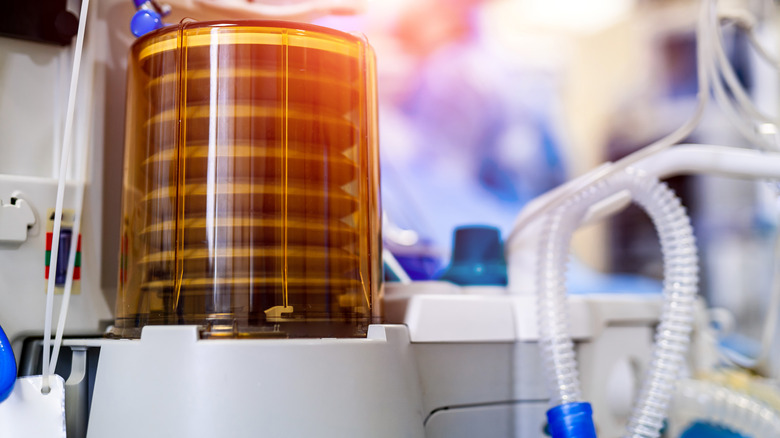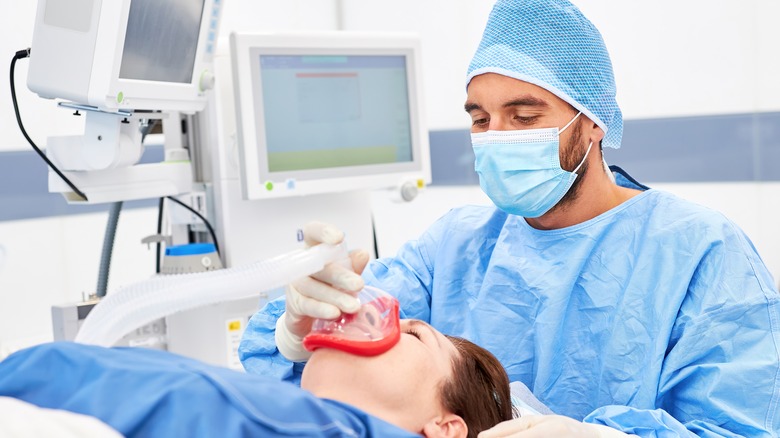How Does A Ventilator Work?
A ventilator is a machine that helps a person breathe when they aren't able to themselves or need some extra assistance, per WebMD. It pumps oxygenated air into their lungs and helps them breathe out carbon dioxide, a waste product produced by the body.
A person might need to be on a ventilator if they have an illness or injury that interferes with breathing. They might also be put on temporarily during surgery, as anesthesia can interfere with breathing.
People have become more aware of ventilators in recent years because of COVID-19, which is a respiratory illness, according to Yale Medicine. Those who have this condition can develop acute respiratory distress syndrome (ARDS) due to inflammation in the lungs. With ARDS, the tiny air sacs in the lungs become filled with fluid, making them less capable of taking in oxygen. People with this complication may need to be placed on a ventilator to help them breathe until they recover.
What happens when you are on a ventilator
The National Heart, Lung, and Blood Institute (NHLBI) states that a ventilator uses bellows to help air move in and out of the lungs. It can be adjusted to control how much air you get and how often.
You will either wear a mask when using the ventilator or you may require a breathing tube to be inserted in your airway (intubation). WebMD explains that if you need a breathing tube, you will be given medications to sedate you. A tube is then inserted through your throat into your airway. This makes it easier for air to get in and out. According to a 2012 study published in the American Journal of Respiratory and Critical Care Medicine, the goal of sedation is to keep people more comfortable during ventilation. Additionally, it helps keep them more physiologically stable.
Landmark Health notes that people who are on ventilators are often unable to eat or drink, so they need to be given nutrition through a feeding tube in their nose. They will also not be able to talk. Sometimes, people need to be kept in restraints while they are sedated so they don't accidentally pull out the breathing tube.
When it's time to come off of the ventilator, the NHLBI states that it will be necessary to gradually wean you from the machine until you are able to breathe on your own.


